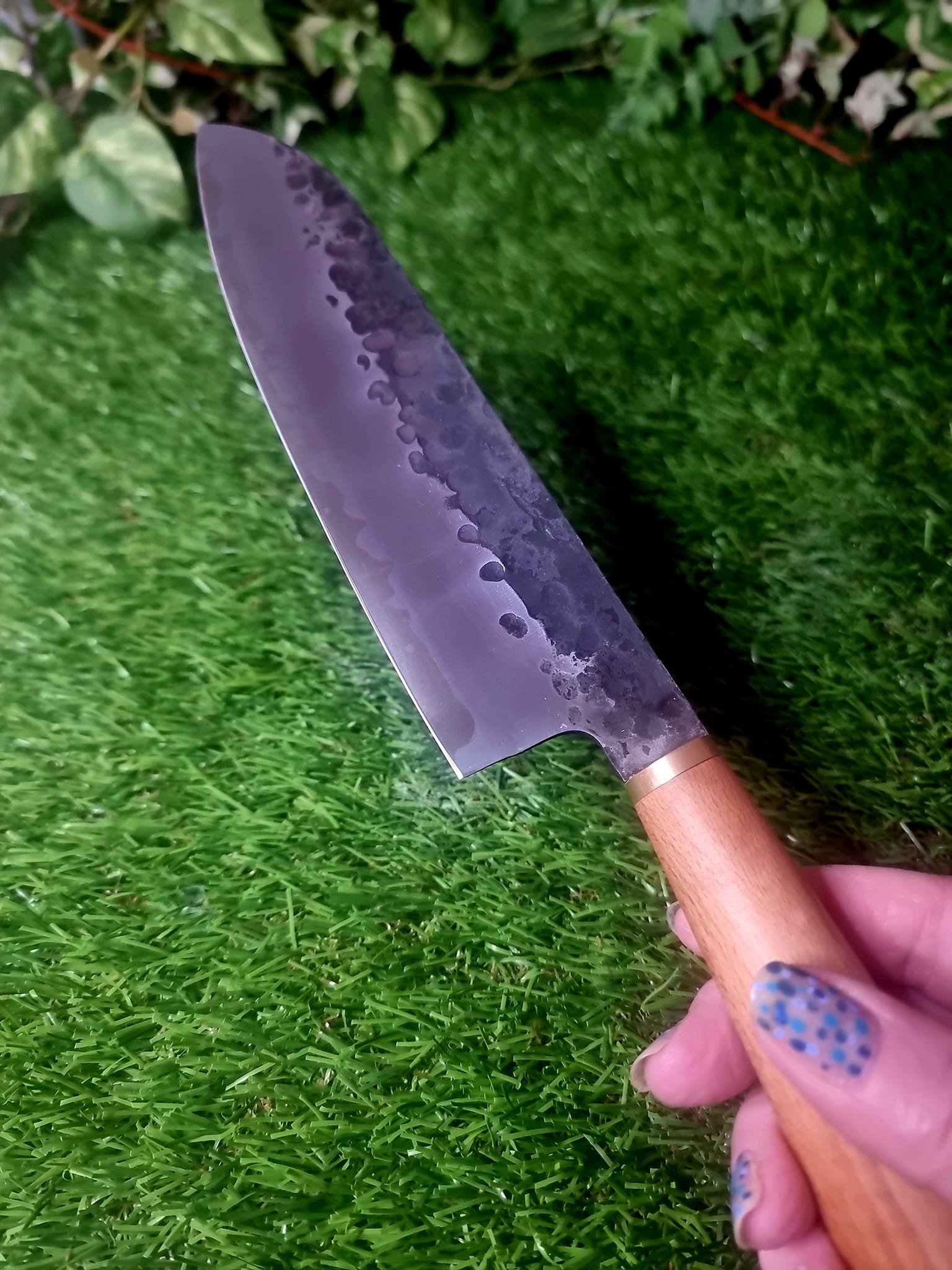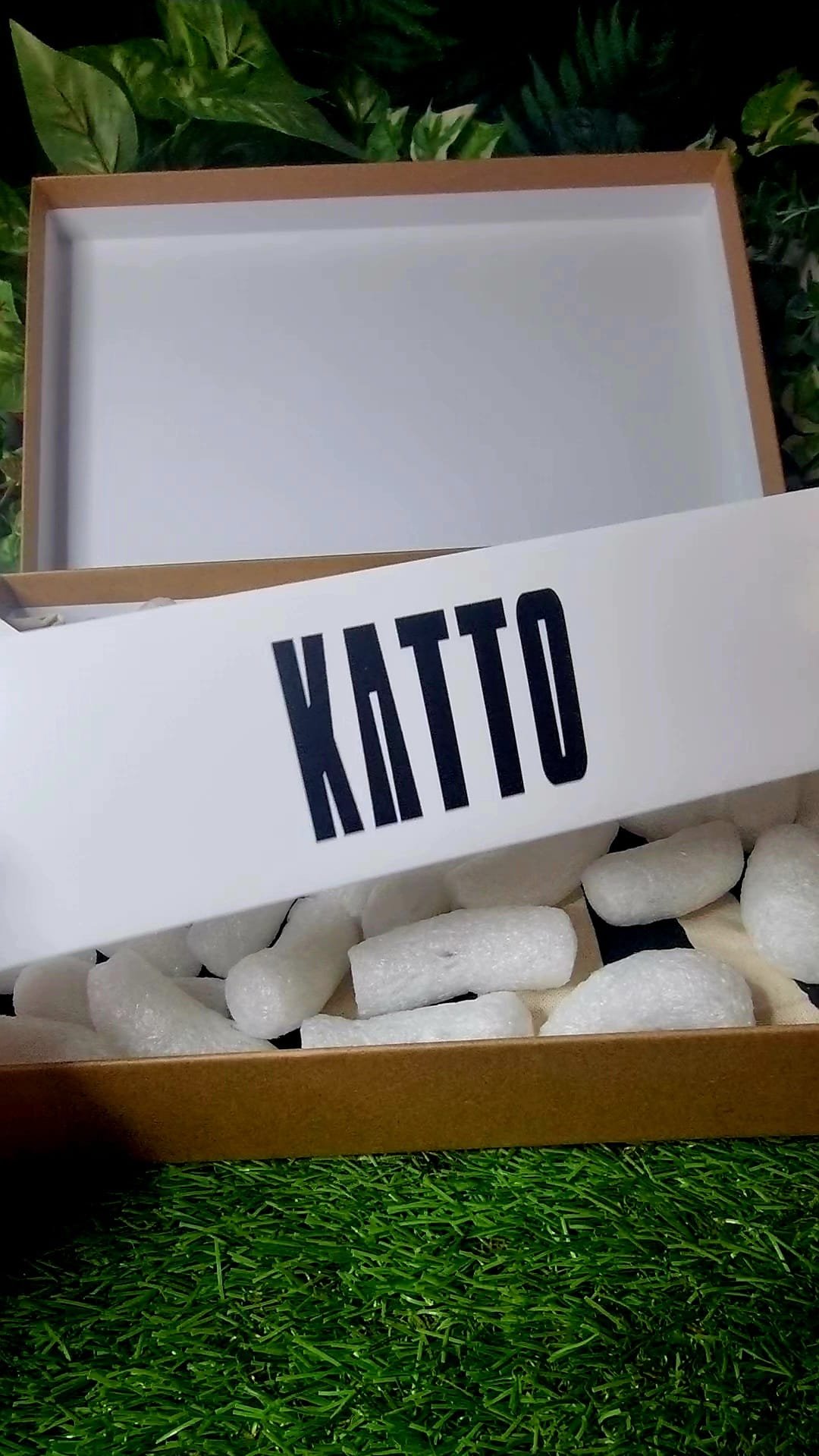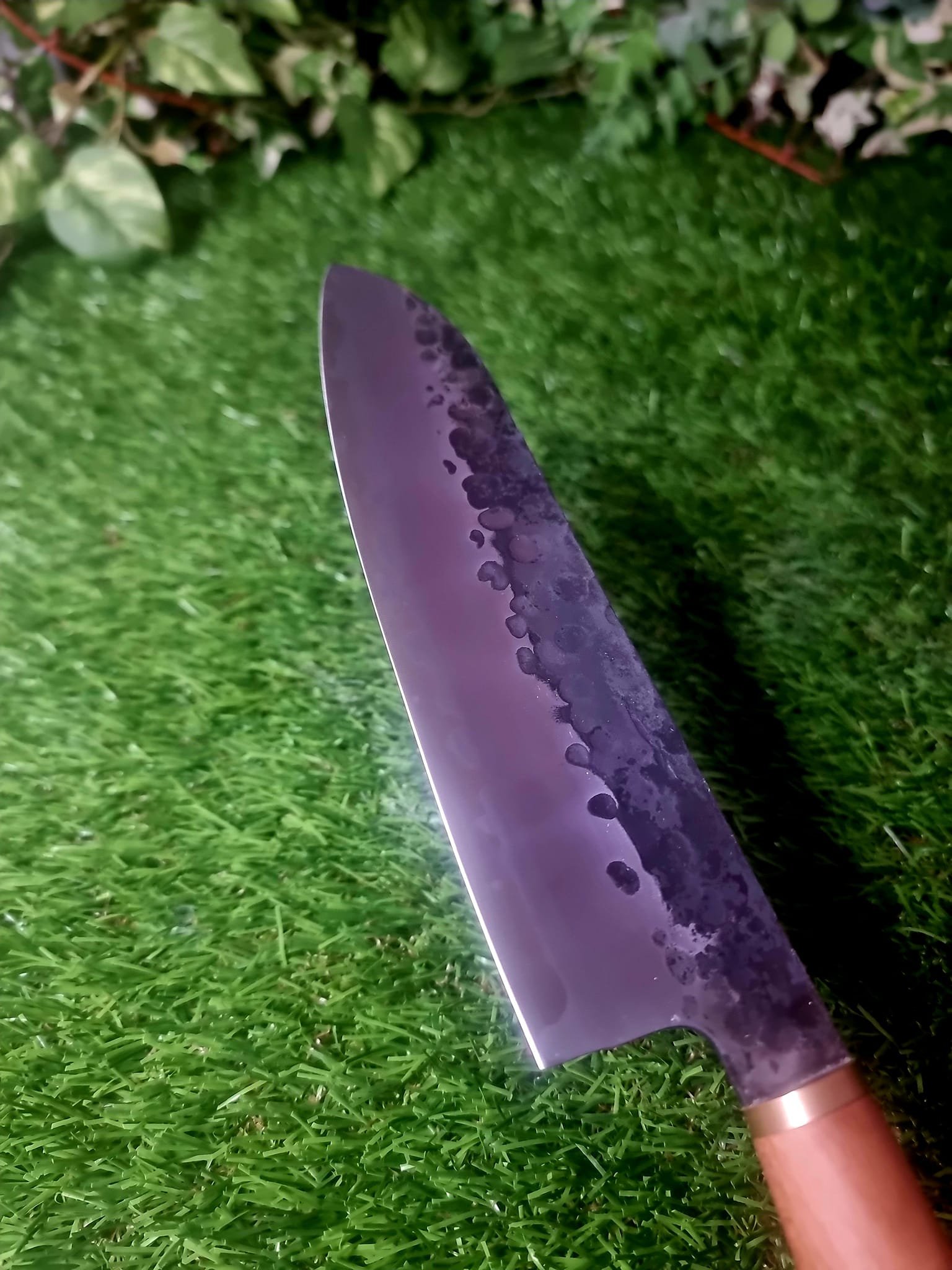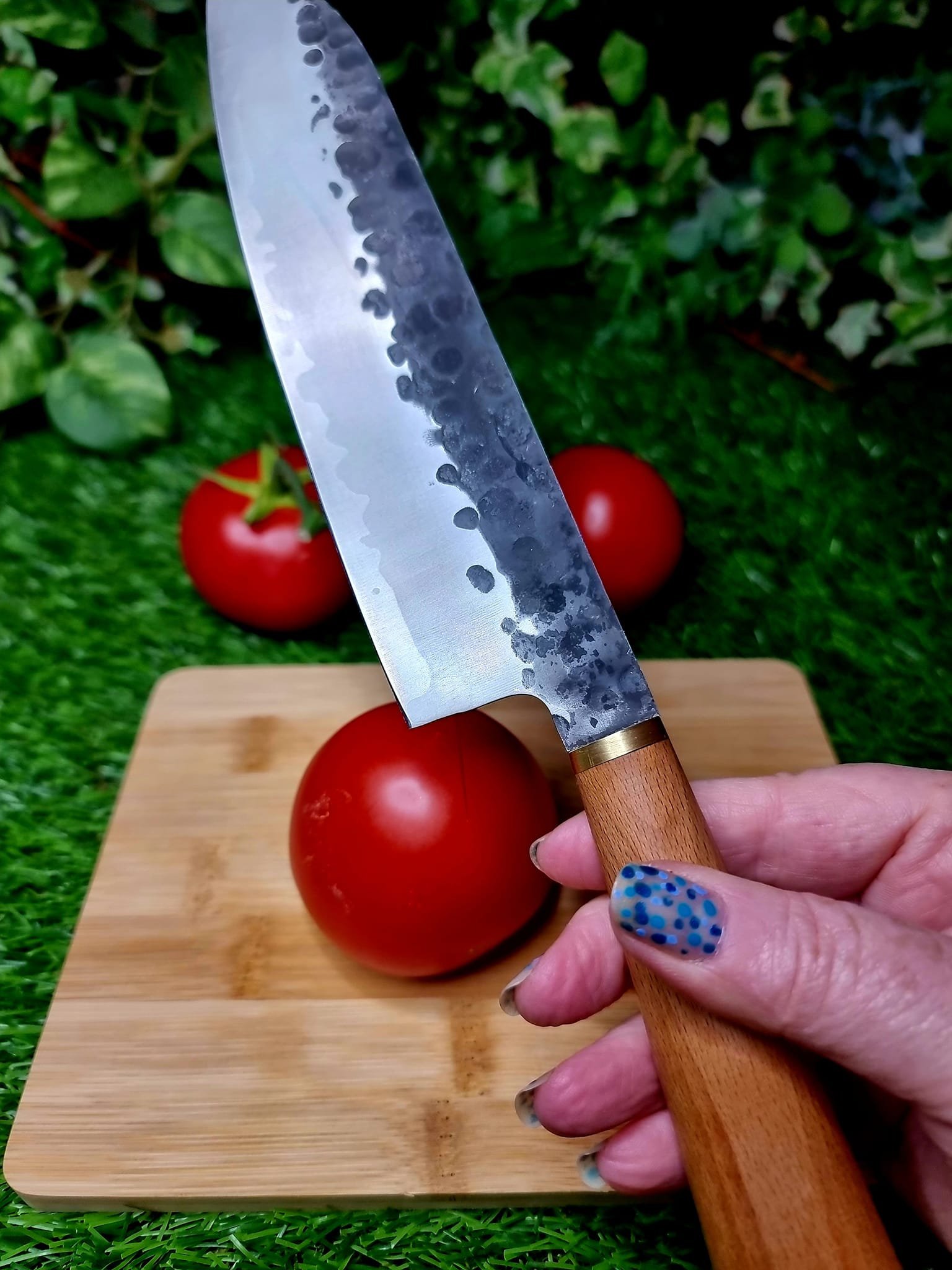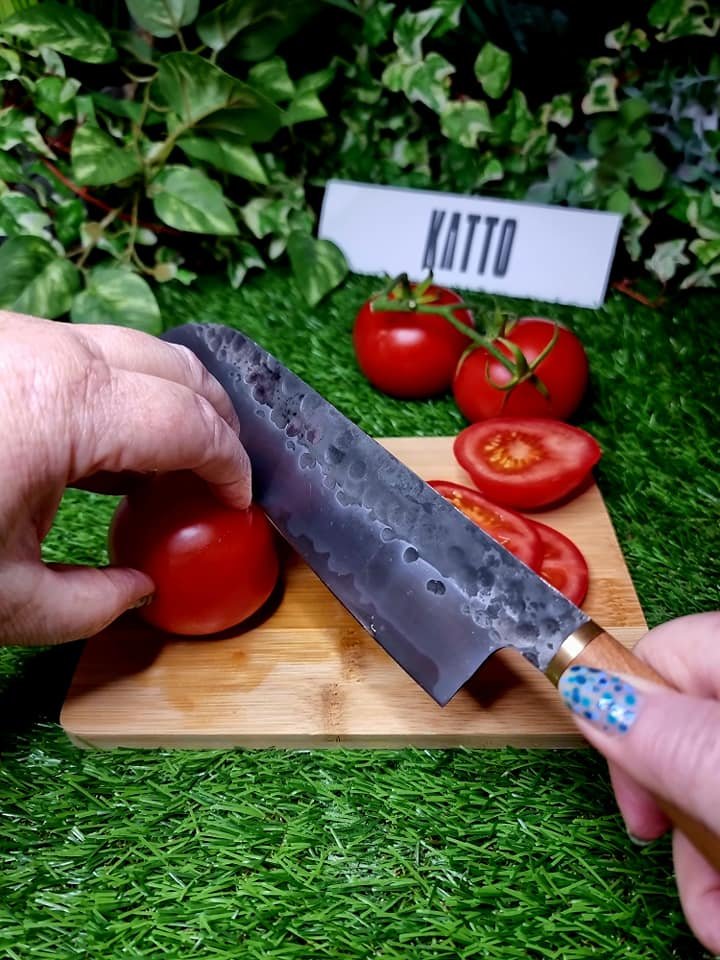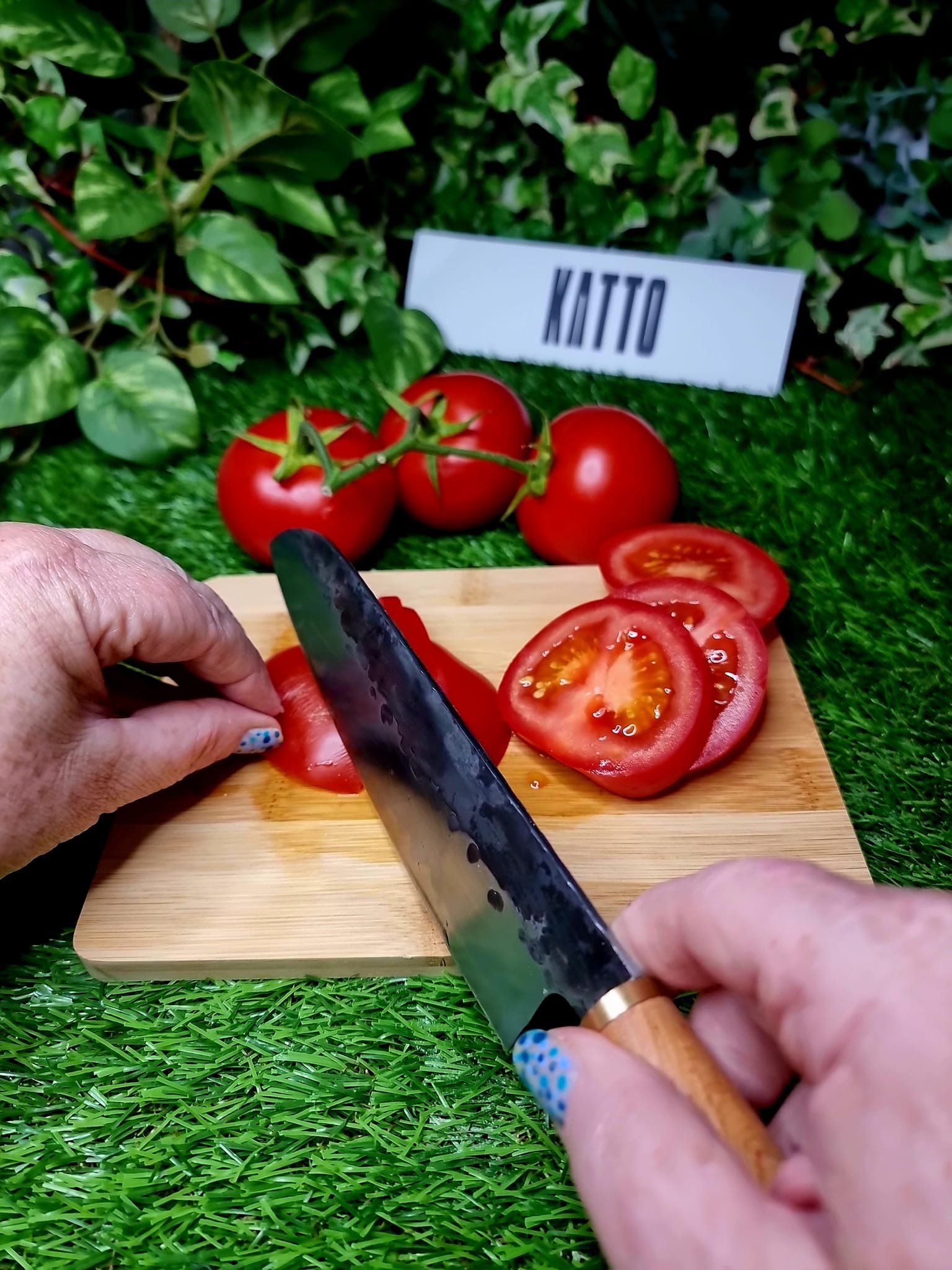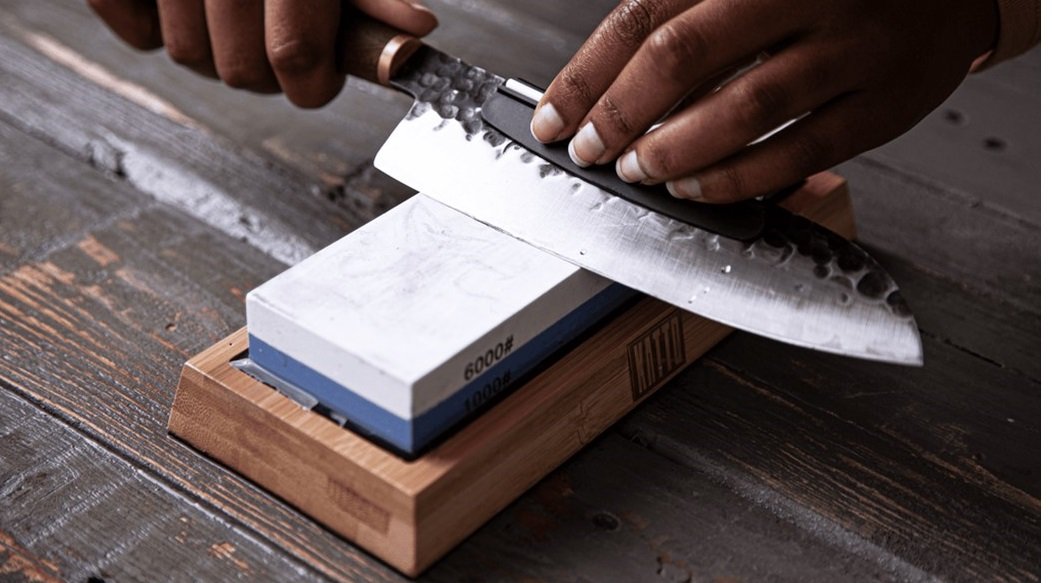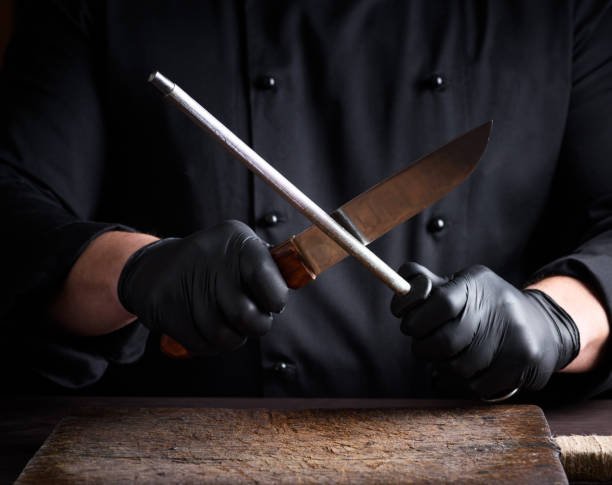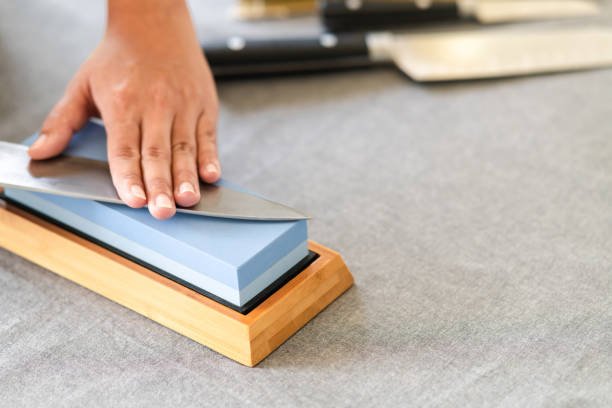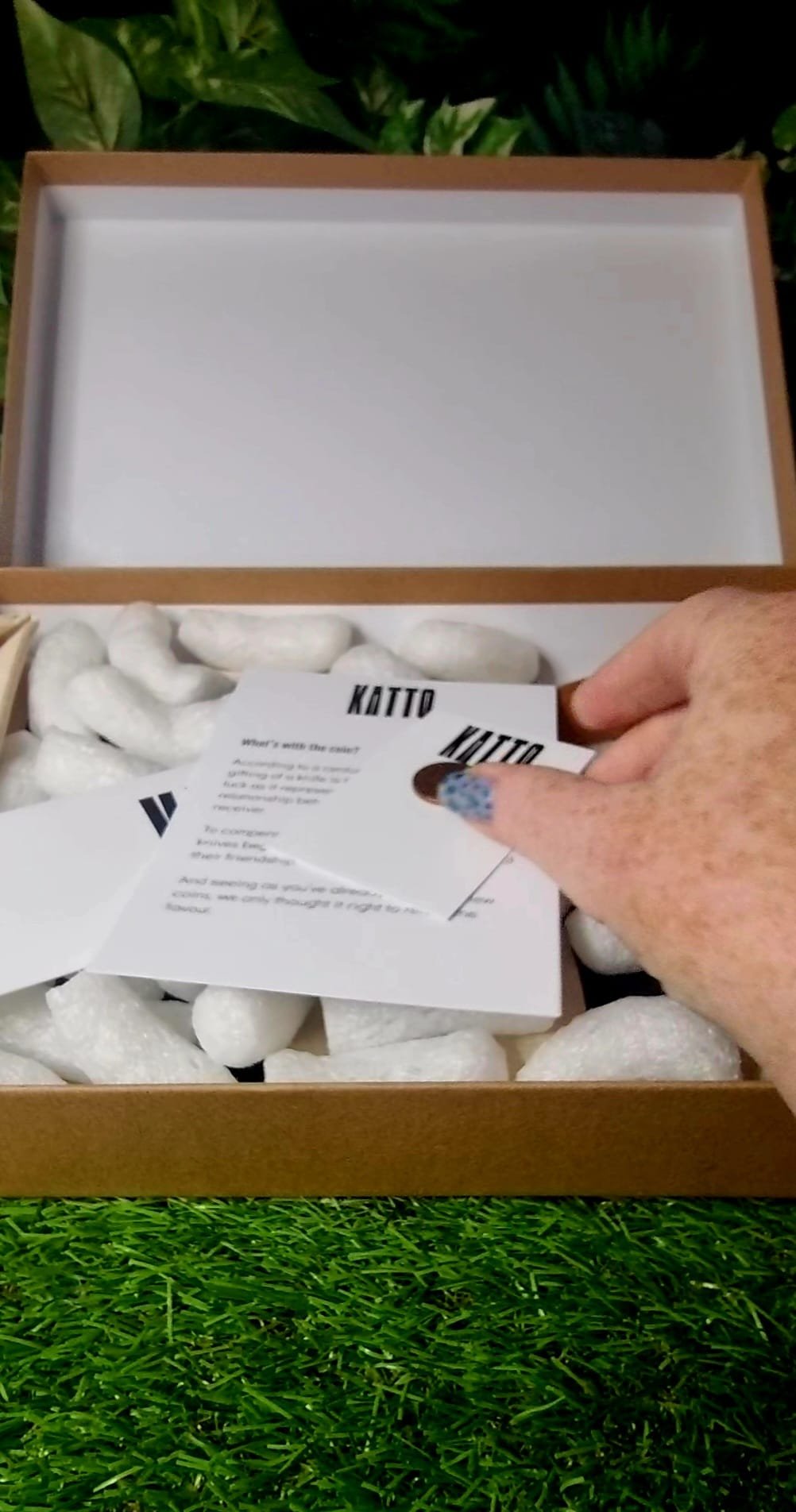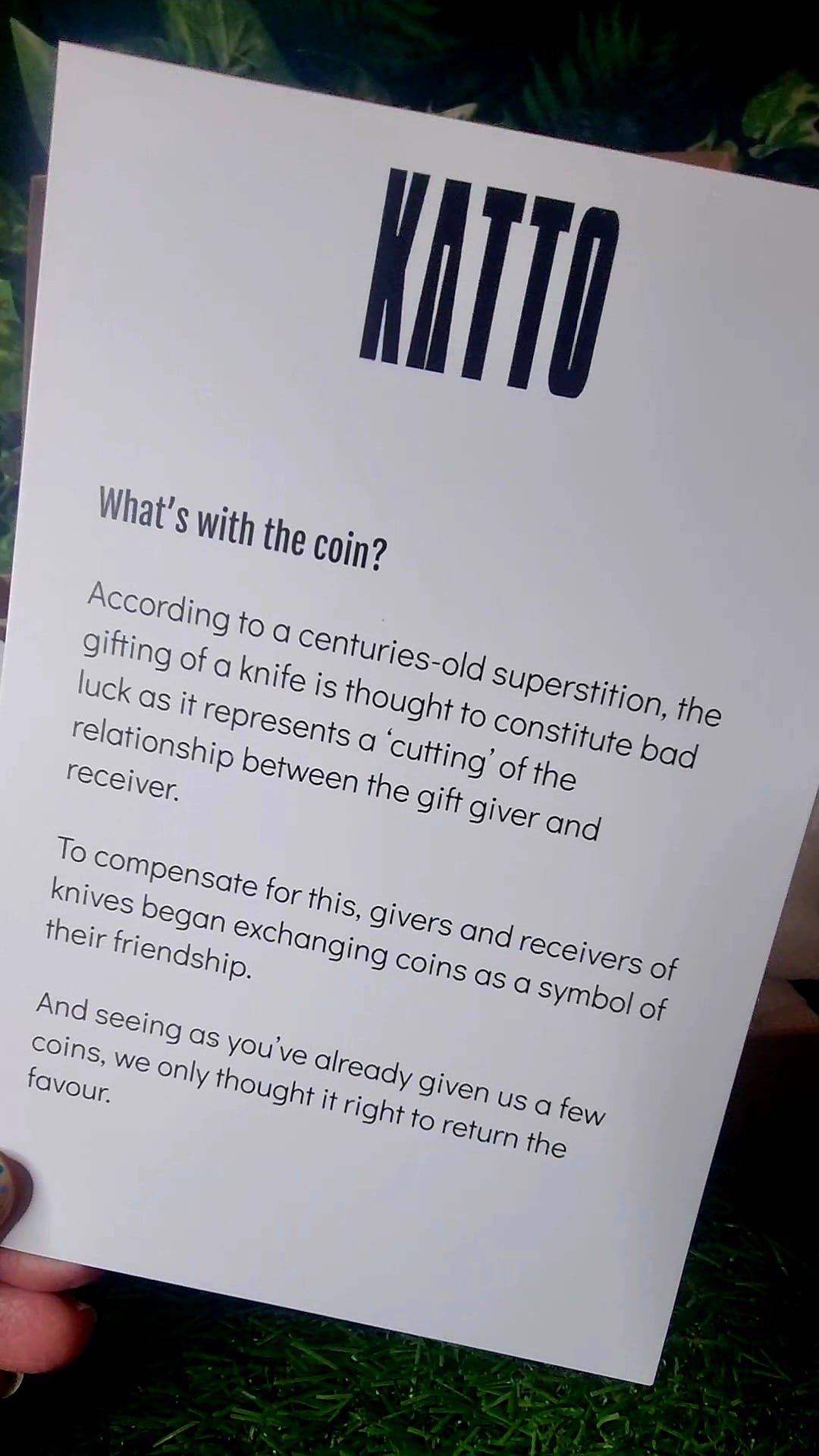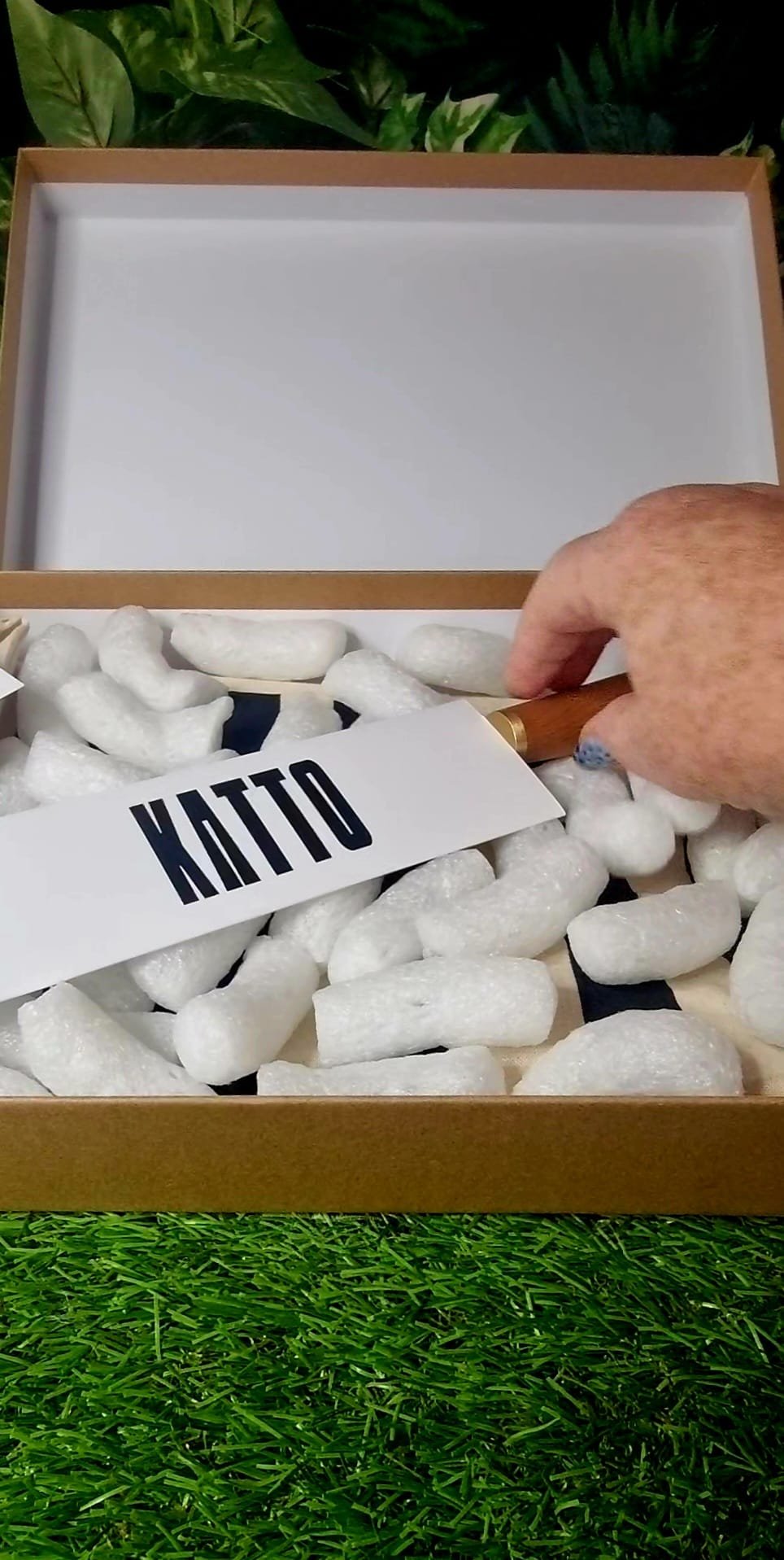PRODUCT : Katto Knives, How to tell when your knife needs sharpening
There is nothing more frustrating than getting all your ingredients and utensils in order, putting some music on, getting just about ready to start chopping up your soon-to-be delicious meal, only to find that your knife is dull. Or even worse yet, blunt. However, sometimes there is a strange inbetween, almost sharp and not quite yet dull. Knowing when your knife needs sharpening can often be quite a confusing affair.
KATTO - HOW TO TELL WHEN YOUR KNIFE NEEDS SHARPENING
Luckily, there are a few quick and easy tests you can do at home to help you tell when your knife does in fact need a good sharpening. Since most quality chef knives need sharpening on an annual basis, you should perform these tests regularly, even if they seem to be cutting things okay. Of course, you want to have a knife that is worth keeping sharp. If you’re unsure about a knife worthy of your time and care, Katto’s Santoku knives have been a recent favourite of ours.
What Tests Are There To See How Sharp Your Knife Is?
The first and most obvious way to test your knife is a visual examination of the edge: when looking at a knife, "Dull" is visible. Take a look at the knife's edge as your first point of reference for sharpness. Holding the knife completely straight, tilt it carefully to the left and right while searching for spots where the light touches the edge. If the edge has been removed or dragged to the side, or if there is any portion of it that reflects light – it’s dull. Another way to spot nicks and chips is visually. If light is unable to collect light around the full edge, your knife is sharp!
The fingernail test is the following sharpness test. At knife fairs and sharpening competitions, many knife makers choose to test their knives' sharpness on a fingernail. The method is straightforward: tap the blade's edge softly on your fingertip. If your knife bites into something, it is sharp; if it slips or deflects, it is dull. Look for any non-sharp spots as you tap from the heel (the area nearest to the handle) to the tip. A marker pen will also work if using your fingernail to check for sharpness makes you uncomfortable. The marker pen should be held at a 45-degree angle as you gently tap the knife's edge on the pen's body; if the knife is sharp, it will stick. One note on this test, particularly if your knife is known to be able to be razor-sharp, be careful! Don’t apply too much pressure or move it around too quickly.
Knives - The Tomato Test
This test is probably the most fun, and you might have already seen it on cooking shows or social media. In fact, so long as you have a Tomato at hand this might be the most decisive test and is one of the reasons why it is the most popular. Having a quality knife in this case makes the test all the more satisfying.
Herbs and tomatoes are two of the flimsiest foods used in cooking, meaning they can act as the canary in the mine for detecting whether a knife is getting dull. To check a knife's sharpness using a tomato, push the knife's edge firmly against the fruit's skin and pull horizontally. A sharp knife should be able to slice through the tomato’s skin without much pressure. A sharp knife will make clean cuts, while a dull knife will result in bruising at the cut ends of the herbs. Fresh herbs are a fantastic way to check a knife's sharpness.
How To Sharpen Your Knife
Many premium knife companies will offer their own free knife sharpening services, so it’s worth taking a look at your brand’s website to see whether such a service becomes available. Otherwise, you can pay a professional to have it sharpened for you, or you can start sharpening your knife yourself.
This isn’t as daunting as it may sound, all you need is a good whetstone, a tutorial or two and some practice. Of course, you’ll need a knife as well.
My review of the Kattu Santoku Knife
Katto kindly sent me my own Santoku knife to try out. A Santoku knife has straight edge and 'sheep's foot' blade. They were originally designed to perform three tasks in Japanese kitchens - mincing, dicing and slicing.
I love the design of my knife with its beech handle (you can also order them with a black walnut or rosewood handles). Each Katto knife is handmade using Japanese steel and sustainable wood; so no two Katto knives are the same. The handle is 12cm long and quite light compared to the blade. The tapered handle allows for a good grip, it fits nicely into my hand giving me good control over the blade for cutting.
There are a few different knives on the Katto website including the Chef knife which is a perfect all rounder capable of everything from light butchery, to carving and vegetable preparation.
My Katto knife arrived beautifully wrapped in brown paper and string, packed snuggly in a box, with the knife presented inside a card scabbard (you can purchase them with a leather one). You’ll also find the package comes with a penny and a note. According to superstition, the gifting of a knife is thought to bring bad luck as it represents a ‘cutting’ of the relationship between the give and receiver. To compensate for this, givers and receivers of knives exchange coins as a symbol of friendship. Isn’t that lovely!
I took the tomato test, as per above and the knife simply slid through it like butter. My knife is sharp! Since receiving this knife, its been the only knife I have been using in the kitchen. I love it! So far I’ve used it when making breakfast - cutting tomatoes, mushrooms and bacon; and at dinner having trimmed steak with it, chopped loads of veg as well as cheese and watermelon. It really does make cooking so much more fun when you have a great knife to take away the hardship of cutting, chopping and slicing.
If you are interested in upping your knife game in the kitchen and taking the hassle out of the prep, do consider Katto Knives. I genuinely love mine!
Katto, The Old Imperial Laundry, London, SW11 4XW. www.katto.shop
